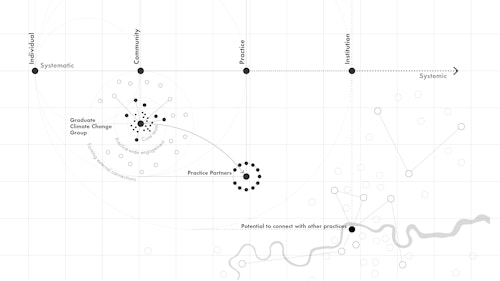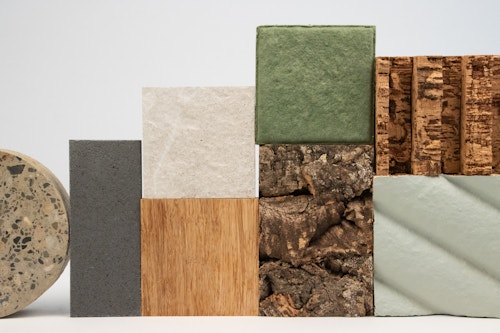
How can we create more 'natural' environments within buildings? Driven by the dual objectives of needing to design healthier buildings while reducing their embodied carbon footprint, we have been exploring the potential of natural materials on large-scale projects. While natural materials may be perceived as innovative, they are, in fact, deeply rooted in traditional building practices. Materials like timber, straw, and earth have historically played pivotal roles in building, only to be supplanted by steel and concrete during and following the Industrial Revolution. Despite the resurgence of mass timber, challenges persist, particularly due to the insurance industry's reluctance to cover what they consider atypical, or experimental, materials and methods.
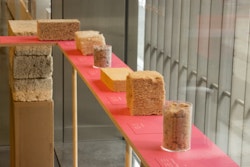
To encourage a more progressive attitude towards natural materials, our latest OnSpace exhibition, explores the diversity of materials present. The exhibition features a library ranging from mycelium, to hemp, to rammed earth. These show a richness of possibilities.
Stone is also a focus. Its relative decline in modern times in favour of concrete is emblematic of a loss of skilled craftspeople. Yet there are signs of a potential revival. We have recently embraced this, incorporating stone as a primary structural element in our proposal for a large-scale commercial office building in east London, where stone forms the backbone of both the structure and facade. The same design proposal has an interior package primarily constructed of timber. Two natural materials working together.
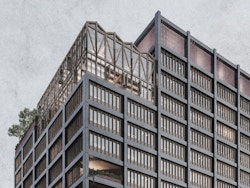
The exhibition challenges the practice to become more of an advocate for natural materials, seeking engagement from peers and leaders in the design community. We frequently draw inspiration from historical precedents, and it is this instinct which has the potential to more widely embrace these age-old materials to shape a better future. It is not a return to the past, but rather a harnessing of the wealth of knowledge accumulated over generations to realise truly regenerative built environments.
As we inherit a world grappling with climate change and biodiversity loss, we can adopt a practice of radical optimism as a form of activism. It is within this context that we have curated this exhibition. As the climate activist and leader Christiana Figueres beautifully put it in her book ‘The Future we Choose’, optimism is about being able to intentionally identify and prescribe the desired future so as to actively pull it closer.
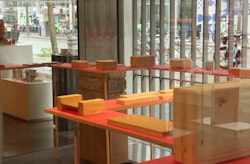
The exhibition has been organised by Allies and Morrison’s Graduate Climate Change Group, a collective of young architects and urbanists within the practice dedicated to driving positive environmental change and inspiring our colleagues to pursue an architectural agenda fit for the climate emergency. Formed in 2022, the group comprises nearly forty members, actively engaging not only within our practice but also collaborating with like-minded peers in the built environment through external networks. After hosting numerous internal events, this is the group’s first exhibition organised in our OnSpace.
The aim is to promote healthier choices in material selection at every stage of the building cycle, where buildings can be regenerative rather than depleting natural resources, to recognise the challenges and adversities but offer a space between what is promised and what is possible - while positioning our practices in that free space, one that is yet to be determined. And in this, there is much possibility for progressive change.
The exhibition was designed and curated by Liam Kelly, Giulliana Giorgi, Jonny Boon, Erin Fairweather, Luca Hallam, Hannah Buckenham and Alex Baker.
Natural Materials is on view at Allies and Morrison’s OnSpace from 26 March to 30 April, 85 Southwark Street, London SE1 0HX.
